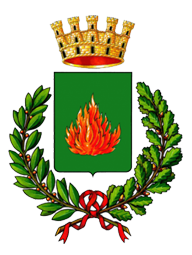Etymology and coat of arms
The oldest documents in which the name of Galatone occurs date back to the century. XIII. The most frequent forms are: Galatana, Galatoni, Galatula, Galatola, Galatone, but also Galatena, Galatine, Galatia.
A tradition collected and perpetuated by the Galateo has been the source of those who have genenerically supported the name of the country to be attributed to that monopoly of refugees who, to escape the reprisals of the Roman consul Tito Quinto Flaminino, Vincitore a Cinocefale, would be repaired here in 197 BC and they would have refounded their native GALATANA.
This hypothesis, however, does not have any documentary support.
However, this did not prevent some of this country from being interested in recognizing in its topoi the Greek root γάλα = milk, and to deduce that those Macedonian origins were mainly devoted to pastoralism.
In conclusion, the Galatians would descend from ancient refugees from Thessaly Galatana or from the Galatian family.
The etymology of Galatone also binds its original civic coat of arms. Some lovers of homeland memories say, in fact, that it consisted of a sheep with a bucket of milk around his neck.
To consolidate this hypothesis contributed, most probably the well-known seicentist poet Giovan Pietro D’Alessandro (1574-1649). One of his compositions of Virgilian intonation, re-proposing the Arcadian ancestry of the primitive Galatone, has credited to the small rustic center a coat of arms with the milk and the sheep:
Dum fuit arce rudis tibi, gens galatea, sed omni labe carens, aderat lac tibi stemma et ovis
 The poet is persuaded that he who had chosen him had to think of the rough and pristine customs of his ancient inhabitants. As they grew and advanced on the path of civil progress, they felt they had to replace a shiny flame with the initial coat of arms; its upward flashes well expressed the unstoppable elevation of the etiquette people.
The poet is persuaded that he who had chosen him had to think of the rough and pristine customs of his ancient inhabitants. As they grew and advanced on the path of civil progress, they felt they had to replace a shiny flame with the initial coat of arms; its upward flashes well expressed the unstoppable elevation of the etiquette people.
The current civic coat of arms of Galatone is a Flame surmounted by a heraldic crown. The replacement of the original “sheep with milk bucket”, would have occurred in 1484, immediately after the Venetian invasion of Terra d’Otranto. “And so it was – Giancamillo Frezza writes – that the Galatei were allowed to exchange their original coat of arms in a lively flame to indicate the firmness, the value, and the liveliness of their soul”.
[Adapted from: GALATONE ANTICA MEDIOEVALE MODERNA origine e sviluppo di una comunità meridionale (Vittorio Zacchino)]





